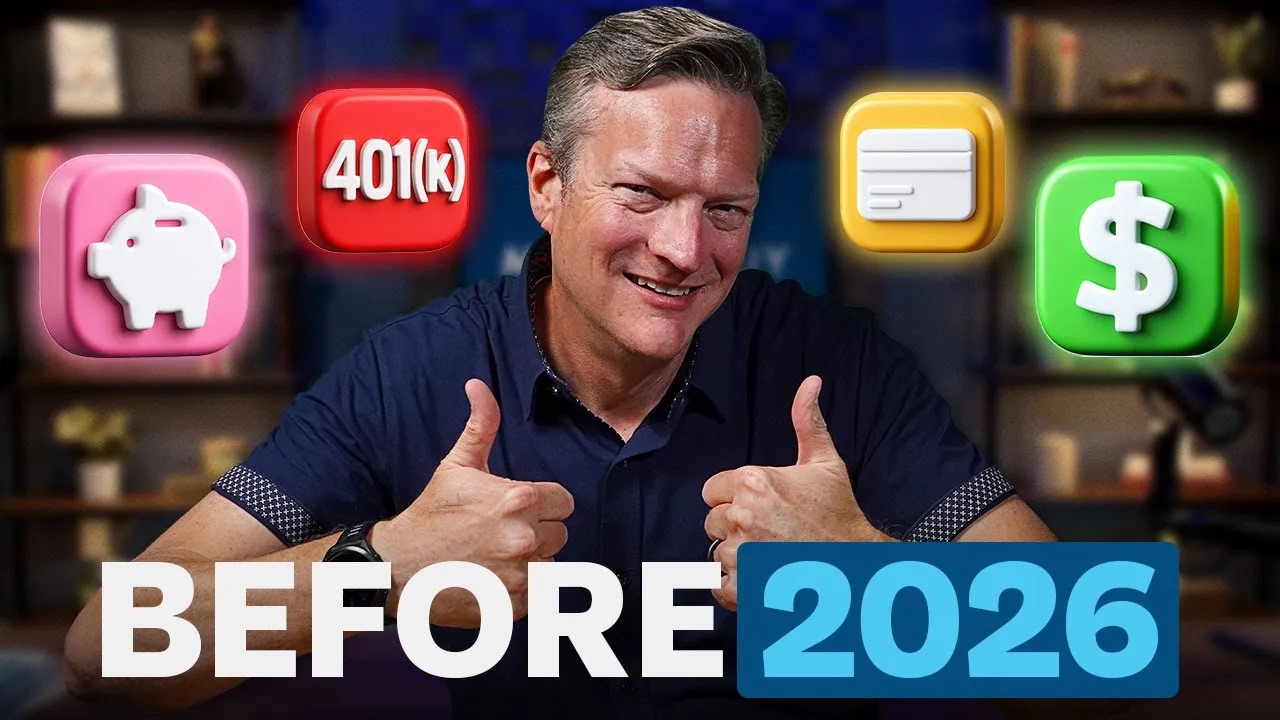Matthew's gonna start us off. His question is, "In addition to step four of the financial order of operations and targeting 20 to 25 percent invested for future retirement, can you provide guidance on an additional savings rate for future purchases? Is this a percentage or with a goal? Like, how should he think about that?"
Well, it depends on your unique situation. So, you're already hitting the big thing, you're following the
financial order of operations. Brian, you don't hold that thing up for me. You're following the nine tried and true steps, so you know, "Okay, I gotta make sure my debts are covered, I gotta get my employer match, I gotta pay off my high-interest debt, I gotta do my emergency fund." Okay, well then you continue progressing, you get to step seven, you say, "Okay, I know I gotta be saving 25 percent for the future." Once you check those boxes, and the reason we designed the financial order of operations the way that we did is so that it gives you ultimate freedom above and beyond that point to choose to do with your money what you would like to do with your money. So, your question is, "Well, how much should I save for a different goal, or how much should I put away?" Well, it depends on how rapidly you want that goal. If you say, "You know what, alright, I'm saving 25 percent, and I want to buy my first rental property, I want to buy a piece of commercial real estate next year," well then you might need to start saving all of your extra discretionary income so that you can build that pocket up. Or maybe just say, "You know what, in a couple of years, I want to put a pool in the backyard, so I'm going to take three or four years, and I figure out the discretionary income I need to save over that time period." I think when it comes to future purchases, there's not a defined, finite, specific percentage because it very much depends on what you, as the consumer, are trying to accomplish, what timeline you want to accomplish it on. So, long to do 25, that's the big one I want you to check, and then you get to be in control after that.
Matthew asked a question in terms of step four, which is Cash reserves, but really it's steps one all the way through seven, just to get your financial foundation. That's the big part. That's why we say the 20 to 25 percent. That's the part we want you to get there as fast as possible, as young as possible, so that money can work for you. By the time you graduate to step eight of the
financial order of operations, this is where you are figuring out, "Is it okay to increase my consumption, or do I need to continue to save and speed up and invest even more money?" And you can understand when we have content meetings and we're trying to figure out what's the next thing we need to share, we realize this was way too intense, and it was too personalized to do only content on. So, that's why we came up with the Know Your Number course, because some of you are watching this, and you're not going to go traditional retirement. You're not thinking 65. You're thinking, "I'm going to do 50, 55, maybe even younger." Well, if that's the case, you're definitely going to need to change that savings percentage beyond the 20 to 25, which is foundational or just basic. We've got to get you beyond that. But how do you tell somebody that without running the numbers, doing the math? Because you've got to figure out, "Am I now in the consumption phase, where I can let off the accelerator a little bit, start spending, have a nicer car, nicer lifestyle? Or are my goals so big and so that I've got to continue to go into this much harder? Maybe I need to be saving 30, 40." That's why we want to give you the tools, so you don't end up being that late 30s, early 40s person who's saving at these very large modified amounts at the sacrifice of living your best life now. So, that's why don't skip the steps, follow the
financial order of operations, partner that up with the
Know Your Number course, and I think you'll be better for it.













